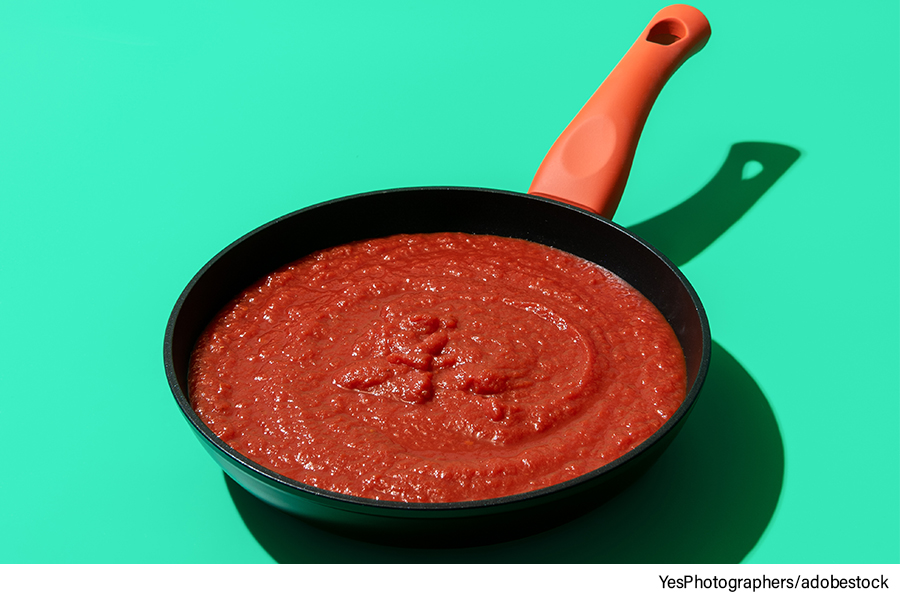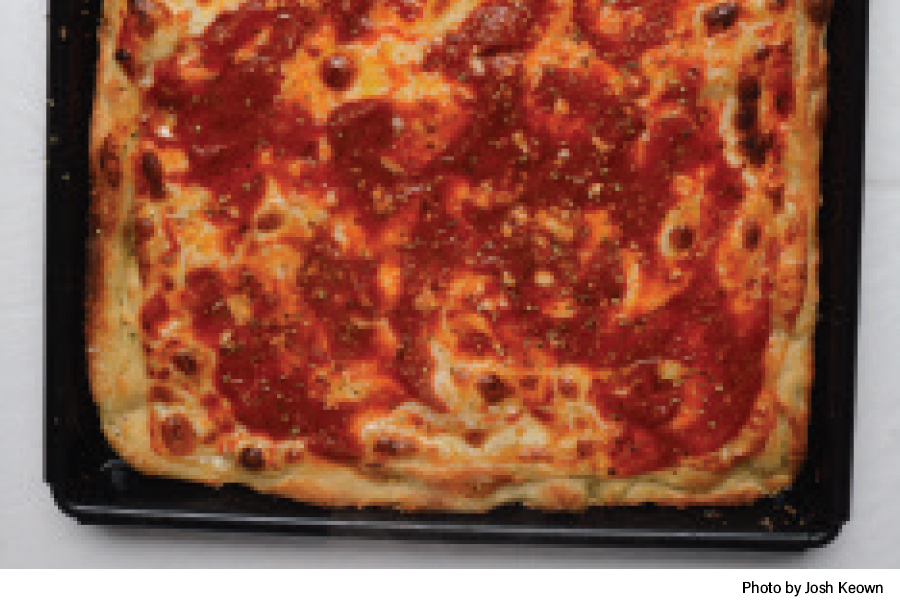A Look at Pizza Sauce Differentiation
My first job in the pizza business was when I was 12 years old. My family had just moved back from Italy and was going through rough times. As the eldest of five I wanted to help out and do my part.
In 1998, my father opened his first pizzeria, which was 45 minutes away from home. He would leave in the mornings and not come home till night. My mother had four other children to tend to and was not able to drive me there when I got out of school. This was pre-Uber, pre-cell phone and pre-debit card era. On weekends, my father would take me with him on Saturdays and on Sundays, drop me off in the morning and pick me up at night.
But I didn’t feel like I was doing enough so I went out to all the businesses that were walking distance from home and sought employment for weeknights. I know what you are thinking. Present day it would be crazy to imagine a 12-year-old kid walking in a store asking for work. But I assure you, where I’m from, 25 years ago this was common in my blue collar Italian American neighborhood. All of my closest friends in the 7th grade had jobs. Angelo swept up hair at Albert’s Barbershop, Antonio was a dishwasher at Danny’s Deli, Francesco (Known as Cicc) was a detailer at Jimmy’s Body Shop and Nikki cut potatoes at Auggies Hot Dog Stand.
It didn’t take me long to get hired as a busboy at Teodori’s Ristorante and Pizzeria.
The owner, Lefty, was a widow and used to come have dinner every night. He quickly took a liking to me and would sometimes ask me to join him. He loved asking me questions about Italy. He was born there, but came over when he was five and had never been back. He also starting trusting me, so I would do stuff like mow his lawn and shovel the snow. At the restaurant, too, I quickly gained more responsibilities like helping with prep, working the salad line, and even working the pizza oven when we were understaffed and busy.
Lefty was a very successful businessman, not only respected in our community but also the surrounding areas. He was exceptionally competitive. When he was not at his restaurant, he frequented his competitors’ establishments, sampling their food and trying to gather information about their recipes and products from the staff.
There was a period he was not happy with his pizza sauce, and he would make me go with him to scour through competitors’ dumpsters to see what tomato products they were using. I would take out trash bags and see which different type of canned tomato products they were using, then count how many of each different product so Lefty and I could try to figure out what ratio of each they were using. This actually helped me a few years later when I helped my family further develop their recipe.
Last year I had the honor of studying with three of the top Pizza instructors in the World:
Enzo Coccia, Massimiliano Savia and Tony Gemignani. Enzo is regarded the top Neapolitan Pizza Instructor, Massimiliano the top Roman Pizza Instructor, and Tony the top American Style Instructor. Regarding their respective pizza sauces, Enzo’s Neapolitan has to be a San Marzano DOP tomato, hand crushed (not milled) and he only adds sea salt. Massimo’s Roman does not have to be a San Marzano (Roman Pizza does not have a strict code like Neapolitan) but must be an Italian tomato, hand crushed, with the addition of extra virgin olive oil, sea salt, and fresh basil. Tony’s New York-style sauce is three parts California ground tomato, one part premium California Pizza sauce, with sea salt, fresh basil and dried oregano.
Both Enzo and Massimo are firm believers in hand crushing their tomatoes. Enzo says that it’s something most pizzerias in Naples do not do anymore, but to honor and carry on the tradition of authentic Neapolitan pizza, he will always do it in his restaurants.
Massimo believes that if you take out the hand crushing, you are taking out the craftsmenship and artistic traits of the pizza as a whole, and your masterpiece will not be complete.
Tony was very hard pressed about never adding water or sugar to your sauce. He suggests if you want more sweetness, use more puree or pizza sauce. If you want to loosen your sauce up, he suggests more ground tomato.
Where I’m from in Chicago, we tend to like more earthy, deep and robust flavors.
Think of our Italian Beef Sandwiches, our Chicken Vesuvio and Deep Dish Pizza. Most Chicago pizza sauces, whether tavern or deep dish, feature a good amount of thick tomato puree and a lot more seasoning than you see in styles mentioned above.
Tomato purees and pizza sauces that you find on the commercial market are tomatoes that have been milled or grounded, then cooked to reduce water content and intensify the tomato flavor. This also gives your pizza sauce less of a fresh tomato flavor and more umami and depth. Another reason is that our dough is built very
different.
Tony’s New York and Enzo’s Neopolitan are both in mid 60-percent hydration, while Massimo’s Roman can be in the 80s percentage range. And because of the higher hydration, different types of flour are also used. Ceresota Flour is the most used in our market, and the hydration is typically in the 50-percent range, and always a fat added (oil, butter or lard). The results are a dryer, stiffer dough that can hold more.
My Chicago style sauce that I use on Taverns and Deep Dish is a two part California puree, one part California ground tomato. And here is the biggest difference: we add Romano cheese, dried basil, oregano, salt, pepper, granulated garlic and EVOO. We also like to blend this and refrigerate at least 24 hours so that the flavors combine and really seep in.
My first lessons in pizza sauce came from jumping through dumpsters counting empty cans. My most recent lessons in pizza sauce came from three of the top pizzaioli in the world. Reflecting on this incredible journey I sometimes feel like I’m in a dream. Twenty Five years flies by my dear pizza friends. Dream more, learn more, do more, become more.
Pasquale DiDiana is owner/operator of Bacci Pizzerias in Chicago, Illinois and a frequent speaker at International Pizza Expo.









